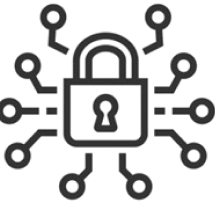- Need Technical Assistance? events@securityweek.com

Registered Attendees
Live Sessions
Technical Demos
Interactive Expo Hall
Resource Center
Attendees can expect to learn about:
Immersive: Immerse yourself in a virtual environment with hundred of enterprise security leaders to discuss the latest cybersecurity trends and gain insights into security strategies that leverage the concepts of Zero Trust.
CISO Panels & Fireside Chats: Hear discussions between enterprise security executives as they examine supply chain risks and how to focus on the risks that matter most to your business.
Networking: Delegates can interact with speakers and sponsors, and visit networking lounges and sponsor booths
Resources: Access technical and strategy resources to help support your security management programs
SecurityWeek Virtual Events Provide

Join us for an exclusive webinar led by ProcessUnity's Chief Trust Officer Dave Stapleton as we dive into how ProcessUnity transforms Third-Party Risk Management (TPRM) with AI. Together, we’ll explore the evolution of TPRM - past, present, and future - to better understand the role AI plays in shaping the field. See how tools such as predictive analytics and automated evidence reviews help you automate tedious assessment work, while future capabilities such as agentic AI will monitor and mitigate risks on your behalf. Leave with ideas from a seasoned TPRM and security expert on how to incorporate AI into your program and elevate your role as a subject-matter expert overseeing your organization's risk management strategy.
Key Takeaways:
Don’t miss this opportunity to prepare your organization for the future of TPRM and stay ahead with AI as your second-in-command.

Dave Stapleton
ProcessUnity, Chief Trust Officer, VP

Hear from security leaders as they reveal their cutting-edge strategies for managing cloud risks. Our panel will share insights on how they’re tackling the unique challenges of cloud security, including how they protect critical assets, measure risk reduction, and track progress with meaningful metrics. We’ll explore real-world success stories, examine how AI and automation play a role in improving efficiency, and discuss priorities for the year ahead. You will learn actionable steps to elevate your risk management strategy.

Adi Foksheneanu
Wiz, VP Revenue Marketing

Karel Kohout
Accenture, Managing Director Europe, AppSec Lead

Roy Weiss
Fireblocks, DevSecOps Expert

John Keegan
DWP, Head of Digital Security

Cybersecurity has long relied on global models—threat intel feeds, vulnerability rankings, behavior baselines—built on the aggregation of telemetry across organizations. But the shift to cloud-native architectures, the explosion of software supply chains, and the operational limits of probabilistic prioritization (e.g., CVSS and even EPSS) are exposing the brittleness of these global models. The next frontier in defensible security decision-making is the integration of local models—statistical and causal models grounded in the specific configurations, assets, behaviors, and exposures of an individual environment.
This talk presents a practical framework for building and operationalizing local models in production environments. We’ll explore where local inference is outperforming global heuristics in vulnerability management, alert triage, and identity risk. Drawing from recent advances in telemetry-based modeling and on-premise LLMs, the talk will demonstrate how teams can move beyond generic scoring toward dynamic, environment-specific assessments—with measurable gains in precision and reduced mean-time-to-decision.
The audience will leave with a clear understanding of:

Michael Roytman
Empirical Security, CTO

Please visit our sponsors in the Exhibit Hall and explore their resources. They're standing by to answer your questions.

In large universities and colleges, cybersecurity governance often must span dozens of semi-autonomous academic departments, research units, student organizations, satellite campuses, and third-party collaborations. This complexity mirrors many enterprise environments undergoing decentralization through acquisitions, business-unit autonomy, or cloud-driven diversification. In this session, I’ll draw from my experience leading security in higher education and local government to show how we designed and evolved a governance model that enabled both alignment and flexibility. You’ll hear about our approach to defining guardrails, assigning risk ownership, enforcing standards, driving adoption across distributed units, and iterating governance over time.
Along the way, we’ll surface the trade-offs, cultural challenges, political dynamics, and architectural levers that shaped our journey. Whether your organization is formally decentralized today or headed in that direction, the lessons from academia offer a rich testbed for refining governance in complex environments.
Learning Objectives (What Attendees Will Learn):
By attending this session, you will be able to:

Lester Godsey
Arizona State University, CISO

Models ingest unclassified data, generate unlogged decisions, and create new audit liabilities that most organizations aren’t tracking.
In this session, we’ll expose how AI adoption has outpaced the governance frameworks meant to protect it, and what CISOs must do now to regain visibility and control.
Key takeaways:
This session empowers CISOs to identify and close the “AI governance blind spot” before it becomes the next headline breach or regulatory failure.

Neil Ashworth
nuwest.ai, Founder

Every vendor promises AI will transform cybersecurity, but the reality is more complex. Automation can scale detection and accelerate response, but it cannot replace the uniquely human ability to interpret context, challenge assumptions, and orient under uncertainty.
In this presentation, we will explore how AI is reshaping the threat landscape, why over-reliance leads to brittle defenses, and how CISOs can leverage AI as a force multiplier without outsourcing their judgment.
The result: security programs that are faster, smarter, and resilient, without the false promise of “fully autonomous security.”

Bob Maley
Black Kite, Chief Security Officer

As cyber threats escalate in frequency, severity, and financial impact, cyber insurance has emerged as a critical risk-transfer mechanism for organizations of all sizes. Yet many CISOs still struggle to understand how insurance intersects with cybersecurity strategy, governance, and incident response. This panel brings together leading experts in cyber insurance, legal risk, and security governance to decode the core concepts that CISOs must know. Topics will include what cyber insurance covers (and what it doesn’t), evolving underwriting requirements, incident response obligations, and the implications of claims disputes and litigation. Attendees will gain a practical roadmap for aligning cybersecurity programs with insurance expectations, optimizing coverage, and ensuring resilience when—not if—a cyber incident occurs.

Monique Ferraro
Hartford Steam Boiler Inspection and Insurance Company, Cyber Counsel

Peter Hedberg
Corvus by Travelers, Vice President Cyber Underwriting


See how Wiz secures everything you build and run in the cloud.

Please visit our sponsors in the Exhibit Hall and explore their resources. They're standing by to answer your questions.

